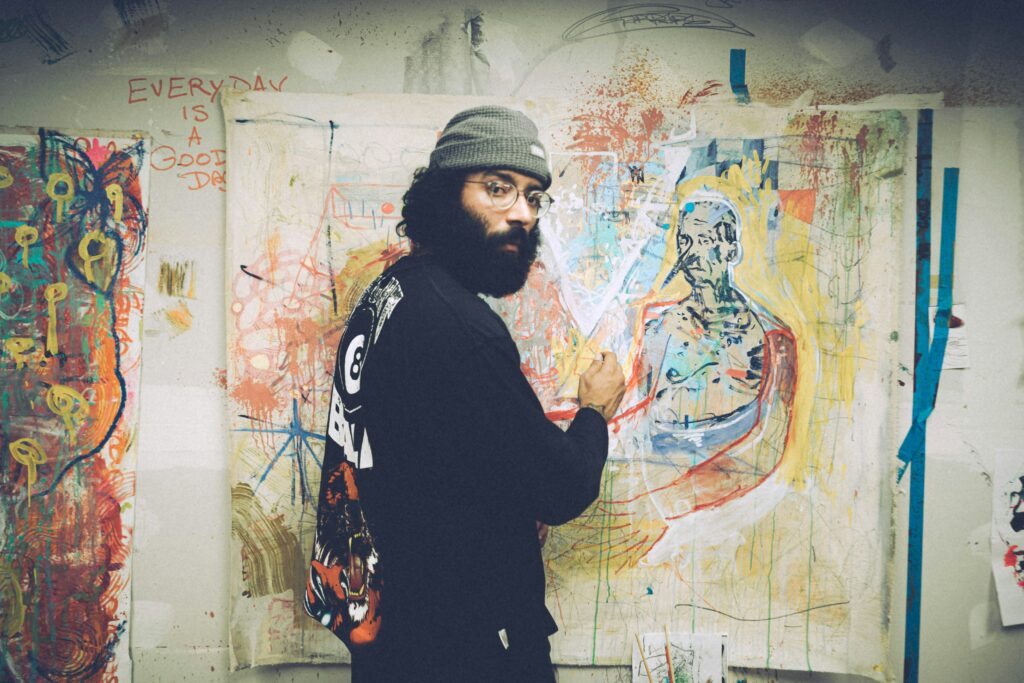We all know there is art and then there is art. The great news is no matter your taste or opinions, or even if you have little experience or artistic talent—art at the level of human expression can be healing for all of us. Even witnessing art, the easiest level of participation, can have profound effects on our mental well-being. Let’s delve into how art can be a source of comfort and support for our mental health.
- Expressing things we can’t put into words: Art is by definition an expression of the artists inner world, sometimes even the shared world that we all live in. Simple colors, shapes, and textures convey emotions and thoughts, valid and deeply true no matter if it is interpreted differently by different individuals. The beauty is that creative expression allows individuals to explore their own feelings, projecting whatever they need onto the images in front of them. Our experience of creating and enjoying art should be a non-judgmental experience of bringing the inside world out where we can explore it.
- Stress Reduction: Engaging in art has been shown to lower stress levels. The rhythmic and meditative aspects of creating art can induce a state of flow, where the mind is fully absorbed in the present moment. This meditative focus helps to reduce stress and promote relaxation. While perfectionism and lack of experience might make this hard to imagine, it also makes it worthwhile to find an art activity that feels accessible at the most basic levels. You’ll be amazed what a great escape it can be.
- Boosts Mood and Positivity: Creating art releases endorphins, the brain’s feel-good chemicals. Whether it’s the satisfaction of completing a piece or the joy of experimenting with colors, the act of creating art can lift mood and foster a positive mindset. When you finish a creative effort, look at it from all angles, as if a stranger completed it and simply be amazed by the creativity that came from within you!
- Enhances Cognitive Abilities: Artistic activities stimulate cognitive functions such as problem-solving, critical thinking, and spatial awareness. Engaging in art can also improve memory and attention, providing a mental workout that supports overall cognitive health. Even individuals who normally have issues with memory or concentration can benefit from trying their hand at something artistic.
- Builds Confidence: Artistic endeavors offer a sense of accomplishment. Completing a piece, trying a new technique, or simply expressing oneself through art can boost self-esteem and confidence. The creative process encourages individuals to embrace their unique perspectives.
- Encourages Mindfulness: While the act of creating art becomes a form of mindfulness meditation, even viewing others art can bring us into the present moment in a powerful way. Noticing the light, the color, the shapes, our own interpretations or emotions about the art—these are mindful acts very much outside the usual daily grind.
- Fosters Connection: Art has the power to connect people. If we are willing to become students and experimenters, show up and see what happens—there are many opportunities through collaborative projects, art classes, or shared exhibitions. Witnessing an important topic or art installation can further connect us to community and the greater narrative of humanity that we are a part of. Reminders of the common experiences that we all have reminds us that we are not alone.
So hopefully you have been reminded rt is not just about creating beautiful images; it’s really for everyone. And it’s a powerful tool for nurturing our mental health. Whether you’re a seasoned artist or a beginner with a sketchpad, the act of creating art can bring joy, reduce stress, and contribute to overall well-being. So, pick up that brush, embrace the colors, and let the therapeutic journey through art begin.







